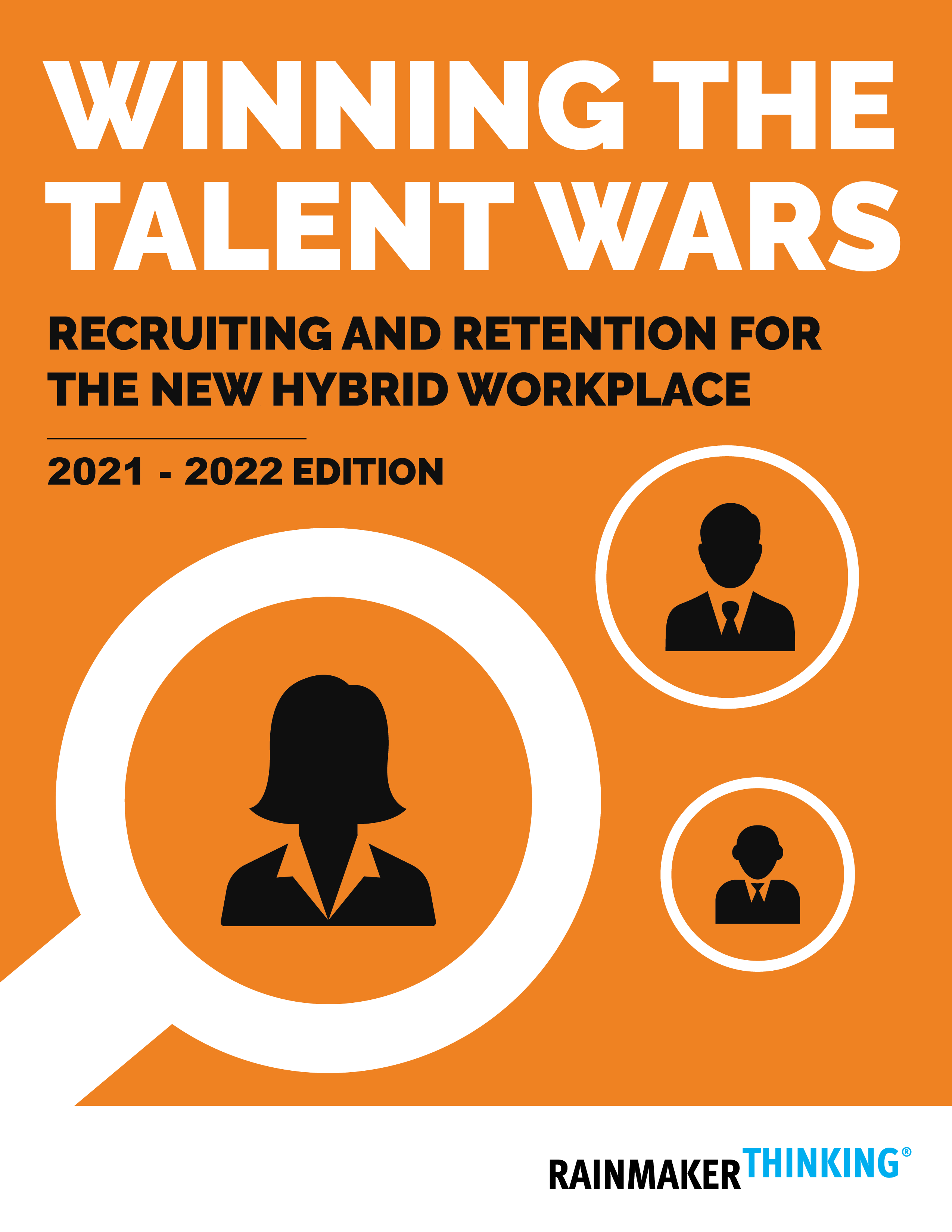Hiring Challenges in 2021--Short-Term and Long-Term Factors
After huge recent fluctuations in the job market--record low unemployment in the months before the Covid-19 pandemic, record job losses during, and record re-hiring in the aftermath--employers are facing more severe talent shortages than any time since we at RainmakerThinking began our workplace research in 1993.
While the particulars differ by geography, industry, skill specialization, and rank in the organizational hierarchy, the evidence of talent shortages is widespread:
- Voluntary unplanned turnover--the 'quit rate'--is increasing
- Pent-up departure demand--the 'want to quit rate'--is also increasing
- Open-position and time-to-hire rates are increasing
- Early voluntary departure of new hires--less than eighteen months--is increasing
Why?
Short-Term and Long-Term Factors Affecting Hiring in 2021
Many observers point to acute, post-pandemic, presumably short-term factors:
- Workforce burnout and depression
- Fear of infection, resulting in fear of returning to the workplace
- Extended unemployment and other benefits
- Increased family care needs
- Location disruption
- Specific industry changes--for example, healthcare, restaurants & hospitality,
and public safety - Hastened retirements and career-pausing
- Postponed schooling/training/graduation, causing delayed workforce entry
While most of these acute factors will ebb with time, there will also be lasting echoes, especially given the longer-term trends that have been steadily transforming the employer-employee relationship.
Globalization & Technology. Globalization and technology have reached a point where the world is so highly interconnected and rapidly changing that adaptability has replaced stability as the strategic imperative.
Job security isn't a guarantee. Institutions must be flexible, so employers can no longer pretend to offer job security to even the most loyal employees. Individuals must fend for themselves and their families, so employees must be prepared to sell t heir work to the highest bidder. This may mean whomever offers more money, flexible time or location, or otherwise.
Shorter terms of employment. Employer-employee relationships become less and less long-term and hierarchical and increasingly short-term and transactional as new modes of work continue to emerge. First there was temping and part-timing, now the gig economy.
More flexibility. Employers have learned from the Covid-19 pandemic they must be even more lean, flexible, and adaptable. Read: smaller real estate footprints and fewer permanent workers. Many employees, for their part, are recalibrating their career ambitions and plans, opting--at least for now--for more life in the balance with wo
The Supply and Demand Curve
Meanwhile, the supply and demand curve for employees promises to be unforgiving to employers for the foreseeable future:
- For jobs that require technical training and certification, whether through a professional degree or apprenticeship to a skilled tradesperson, the pipeline is not keeping up with market needs.
- For those service jobs that do not require training and certification, there are shortages of candidates with the soft skills necessary for optimum performance.
- Organizations with significant 'age bubbles' (those born before 1965) will begin to feel the steady effects as the oldest, most experienced employees retire. Those retirees take with them the skill, knowledge, wisdom, institutional memory, and relationships developed during their tenures.
- By 2022, individuals born in 1990 and later will comprise greater than 33% of the North American workforce, with similar figures for Western Europe and Japan, and even higher percentages in parts of South America, Africa, and Asia. Organizations with high percentages of young workers will face an increasingly transactional workforce, not hesitating to request greater flexibility and other concessions in their working arrangements.
Gain a strategic hiring advantage in 2021
Read more from our new white paper, Winning the Talent Wars: Recruiting and Retention for the Hybrid Workplace.
The post Hiring Challenges in 2021--Short-Term and Long-Term Factors appeared first on RainmakerThinking.










